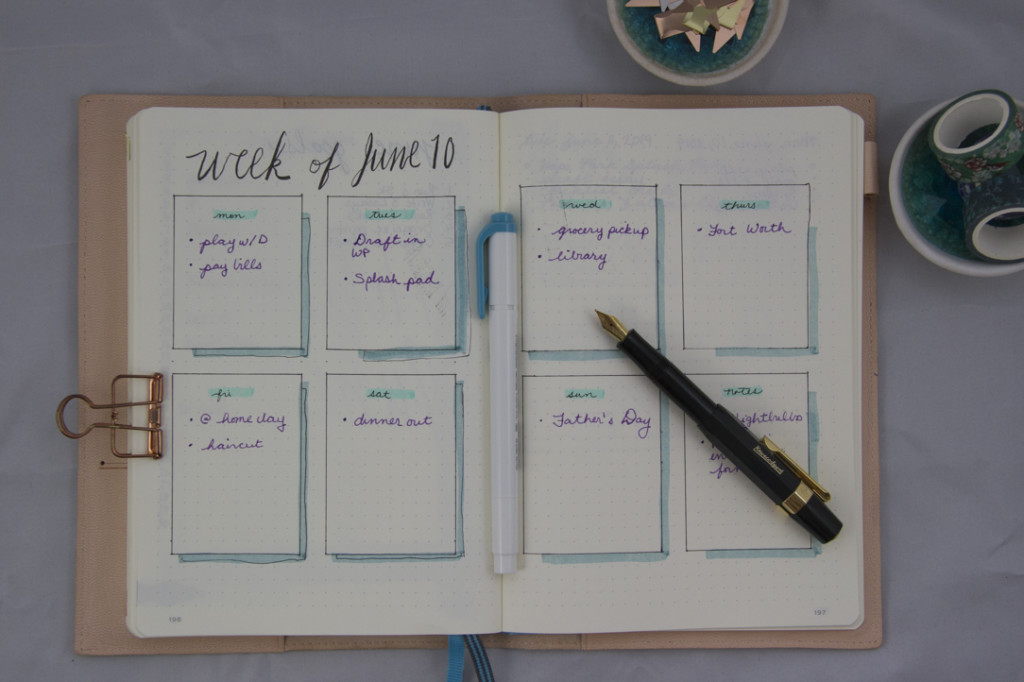
If you’re a planner addict like me, you may have seen tags for a #bujo on Instagram, but what is it? In a nutshell, it’s a Bullet Journal, a concept created by Ryder Carroll. His website describes the Bullet Journal “as a mindfulness practice disguised as a productivity system.” I like Bullet Journals because they’re used as a planner, diary or journal, or as a project tracker – or all three. The original Bullet Journaling system is now one of many ways to use this amazing analog journaling concept – but I love it because I can make it my own!
I started my Bullet Journal in late 2015, before I had my son. Now that I’m a mom, my journal is a fundamental way for me to keep track of and plan activities for my son, my family, and myself. It can be whatever you want, and mine, which I use as a hybrid journal and planner, keeps track of everything.
Maybe you want to start a Bullet Journal of your own, but don’t know where to start. Or maybe you don’t know why you should start one, especially as a mom with so many planner systems available (including gCal and iCal). But I’m here to tell you I’ve found Bullet Journaling to be a game changer. I use mine to track goals and activities and to keep me accountable to myself. While I still use a day planner (paper, not digital), my journal is my hub – where I get into detail. For me, it’s indispensable.
I like Bullet Journaling in addition to keeping track in iCal or a paper planner because it’s completely customizable. I can also make my entries more detailed than my other planners allow. My journal fits in my purse, which my day planner does not. In my Bullet Journal, I can track projects I’m working on for my blog, writing ideas, shopping lists, and to-dos. Instead of having everything spread out over multiple notebooks and apps, it’s all in one easily-referenced place. For a busy mom, it’s perfect!
How to make your own BuJo
If you want to start a Bullet Journal, you really only need a few things.
1. A blank notebook (most people who keep a Bullet Journal like a dot-grid one — I personally use the Leuchtturm1917 A5 size). It can be any notebook from anywhere. The most important thing is that you use it. Michael’s sells inexpensive dot-grid notebooks if you aren’t sure you’ll love Bullet Journaling, and they’re great for trying out new artistic layouts you may not be sure about.
2. You need a pen. I use a Kaweco Sport Fountain pen for my every day. I also like Pilot Juice .38 Gel Pens for drawing layouts or spreads. They’re very fine-tipped and I like them for that reason. You may like a thicker pen, and for that I’d recommend a Pilot InkJoy Gel Pen – they dry quickly so you have less risk of smearing.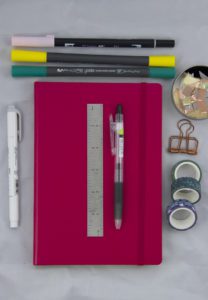
3. In addition to my notebook and pen, I use a Midori journal cover because I think it’s pretty. I also use Zebra Mildliner highlighters in pastel blue, teal, and pink. Sometimes, I’ll even dig out some Tombow brush pens. A friend of mine uses the Yoobi ones you can find at Target. If you think you’ll be drawing a lot of lines, a small ruler is a great thing to buy – mine is from Amazon.
4. Other supplies you may want (but aren’t necessary) are book darts and clips. I use book darts to mark pages I return to over and over – like my habit tracker. The clips I use to help keep my book flat while I draw a layout. Mine are Kikkerland and I found them on Amazon.
Once you have a notebook and pen, you can set up your journal. It’s easy. You start with the index at the front. Many Bullet Journals include dailies, weeklies, or monthlies. I don’t use a weekly spread (the one pictured is one I created as an example for this post). Oh, and what’s a spread? Rachel Wilkerson Miller defines this in her book Dot Journaling, A Practical Guide as “the way information is organized on a page (or across multiple pages).” You could also call it a layout. Don’t worry – I have pictures!
Mine contains an Index in the front with page numbers and a key in the back. I also include Habit trackers, monthly goals, monthly pages, and daily pages – many pictured below:

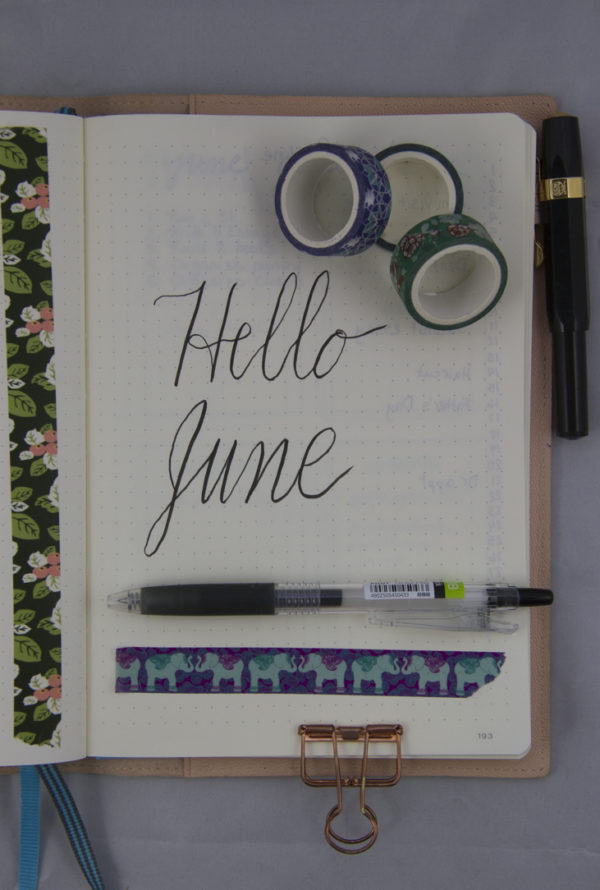
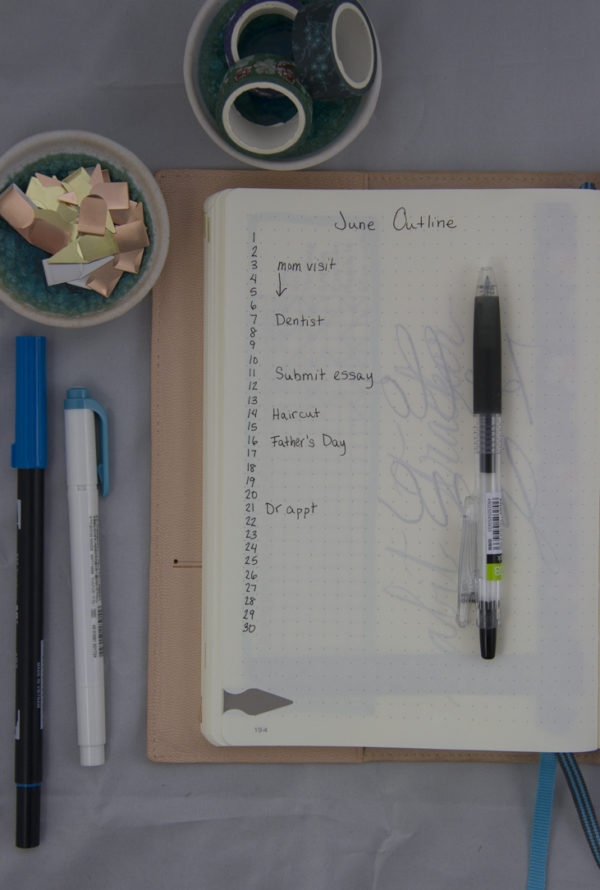

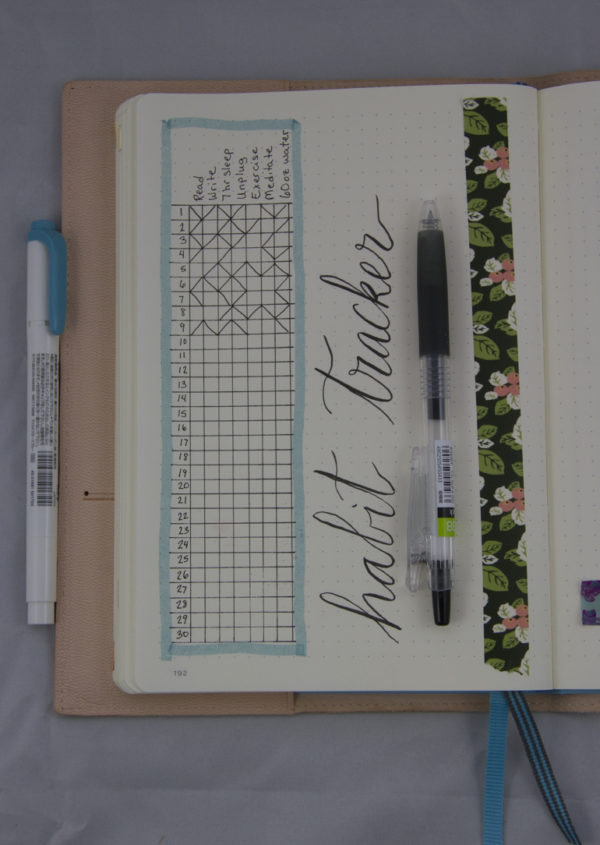
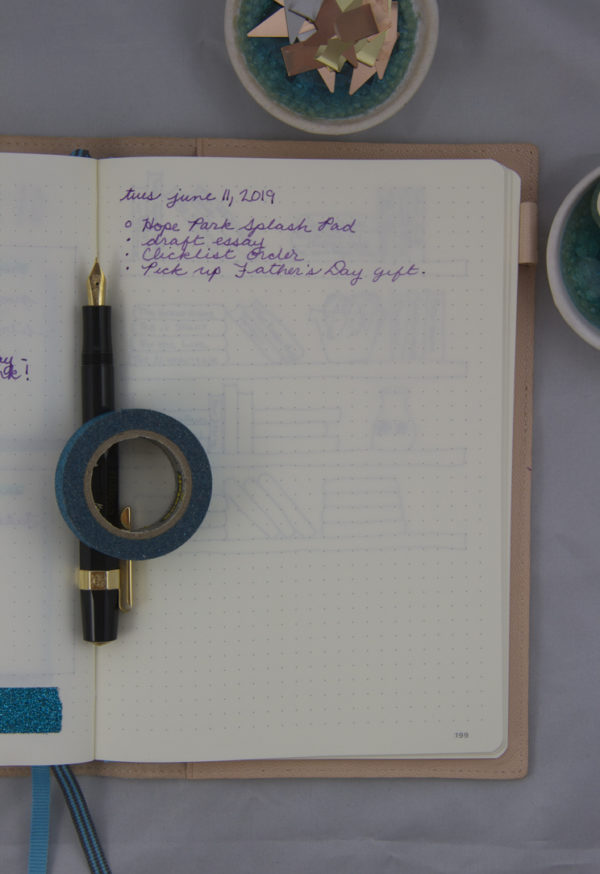
I also track goals in fun, hand-drawn ways. For example, one of my goals is to read 52 books this year. I’ve already completed 35 (yes, you read that correctly – I read a lot). I track these using a bookshelf layout like the one pictured.
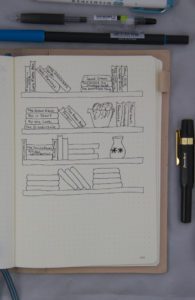
My daily is my key to staying organized. In it, I keep a running to-do and places-to-go list. Then, at the end of the day, I fill in notes about those activities. I got this idea from Dot Journaling, A Practical Guide. It’s great to look back at the end of each month and see my thoughts and feelings laid out in black-and-white (or lately, purple) so clearly.
If you search the hashtag #bulletjournal on Instagram, you may see layouts full of color and drawing. I do this in my book, but you don’t have to. It’s your journal, and the wonderful thing about it is that it’s entirely yours – it’s completely customizable. What I have here are examples I drew so you can see how I journal.
If you want to see just some of what other Bullet Journalers do in their books, check out BohoBerry, Tiny Ray of Sunshine, or Little Coffee Fox. They all use their journals differently and beautifully. You can also join one of many (many) Bullet Journal groups on Facebook. I’m partial to Minimalist Bullet Journal and Bullet Journal Junkies, but you can find a group for just about anything – including beginners.
Bullet Journaling is a great way to be mindful about your day and to customize your planner to work how you need it. If something doesn’t work, you can always change it, and you can always try something new to see if it works. I love Bullet Journaling because I’m not boxed into just one format from day to day and week to week.













